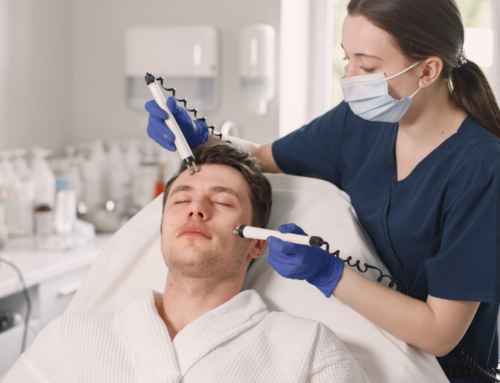Here are some ratios to keep an eye on so you will be able to determine the level of financial stability of your practice and help you make better decisions for your future.
These are just a few the financial ratios physicians can perform using income statements and balance sheets provided to them by their accountants and office managers. These ratios will help you determine the level of financial stability of your practice and help you make better decisions for your future. Financial health is hard work. Just like you ask your patients to keep track of their diet and exercise activity, you should also closely monitor the financial health of our practices.
The current ratio
One of the most important ratios to know is a solvency ratio called the current ratio. The term “current” in a financial report, indicates that you can either convert the asset into cash within a one-year period or the liability is due within one year. Current assets are assets that can convert to cash within one year. Current assets include things like cash, cash equivalents, accounts receivable (A/R), bad debt allowance and any inventory we have on hand. Current liabilities are bills that must be paid within one year. Current liabilities are all notes and accounts payable due within one year, interest payable, wages payable and income taxes payable.
The current ratio is an indication of the firm’s ability to pay back its short-term liabilities. To obtain this ratio, we take all of the current assets and divide them by the current liabilities. If the current ratio is less than 1, this indicates the company has more debt due within one year than it has assets it can use to pay those debts. This is a critical ratio for any company, particularly in medical practice. If your current ratio is less than 1, you need to seriously consider how your practice will survive should something happen to your cash flow.
Another ratio similar to the current ratio is the quick ratio or acid test. This is the same as a current ratio except that inventories are not included in the numerator. It looks at the most liquid assets and compares them against the current liabilities. If your practice does not hold inventory, then your current ratio is a quick ratio or acid test.
Days in accounts receivable
Days in A/R measure a company’s ability to convert receivables into cash. A low days-in-A/R number indicates that the practice can quickly collect on its debts.
This ratio varies from industry to industry. The important thing to watch is whether the number increases. If it is increasing, it should spur your staff to investigate why and find ways to bring the number back down. Every practice should know its general days in A/R. It is equally important to know the days in A/R for each payer class.
This calculation is performed by dividing accounts receivable by the revenue and then multiplying by 365.
Operating margin
Operating margin is a measure of what proportion of the company’s revenue is left over after paying the variable costs of production of the services or goods. These costs include wages, raw materials, etc. It is important to have a healthy operating margin so that the company has enough cash to pay its fixed costs. This is also known as an operating profit margin for the net profit margin. It is calculated by dividing the operating income by the net revenue.
Working capital
Capital measures the practice’s abilities to pay its bills on time. It is another liquidity or solvency ratio. It is calculated by subtracting the current liabilities from the current assets. The larger the number, the larger the working capital and the larger the cushion the firm has should an unexpected downturn in revenue occur.
Days in accounts payable
Like days in A/R, days in accounts payable (A/P) measures how long it takes for the practice to pay its bills. This is an important ratio because it can be a lagging indicator of the financial health and solvency of the practice. Also, it can be a good indicator of how well the practice is using its cash. Paying bills too soon might strap the firm for cash in the short term. Paying bills too late puts the practice in jeopardy of financial and legal action. This is also a good ratio to know about those with whom you have service contracts or agreements. If they take a long time to pay their bills, it will give you an indication of what to expect. This calculation is made by the ending accounts payable divided by the cost of sales divided by number of days.
CONTACT PRACTICE ADVISORS
Now that you have read some basic tips and things to consider you are ready to sell your practice. After you have found a place that meets your needs you will still need to make on offer, secure financing, sign the practice sale agreement and lease, and complete the purchase. As you can see a lot of important factors go into this decision. Make sure you are being properly advised. Practice Advisors 360 is the nation’s leading dental advisory company. Contact us today at (844) 360-8360 or visit us online at practiceadvisors360.com






